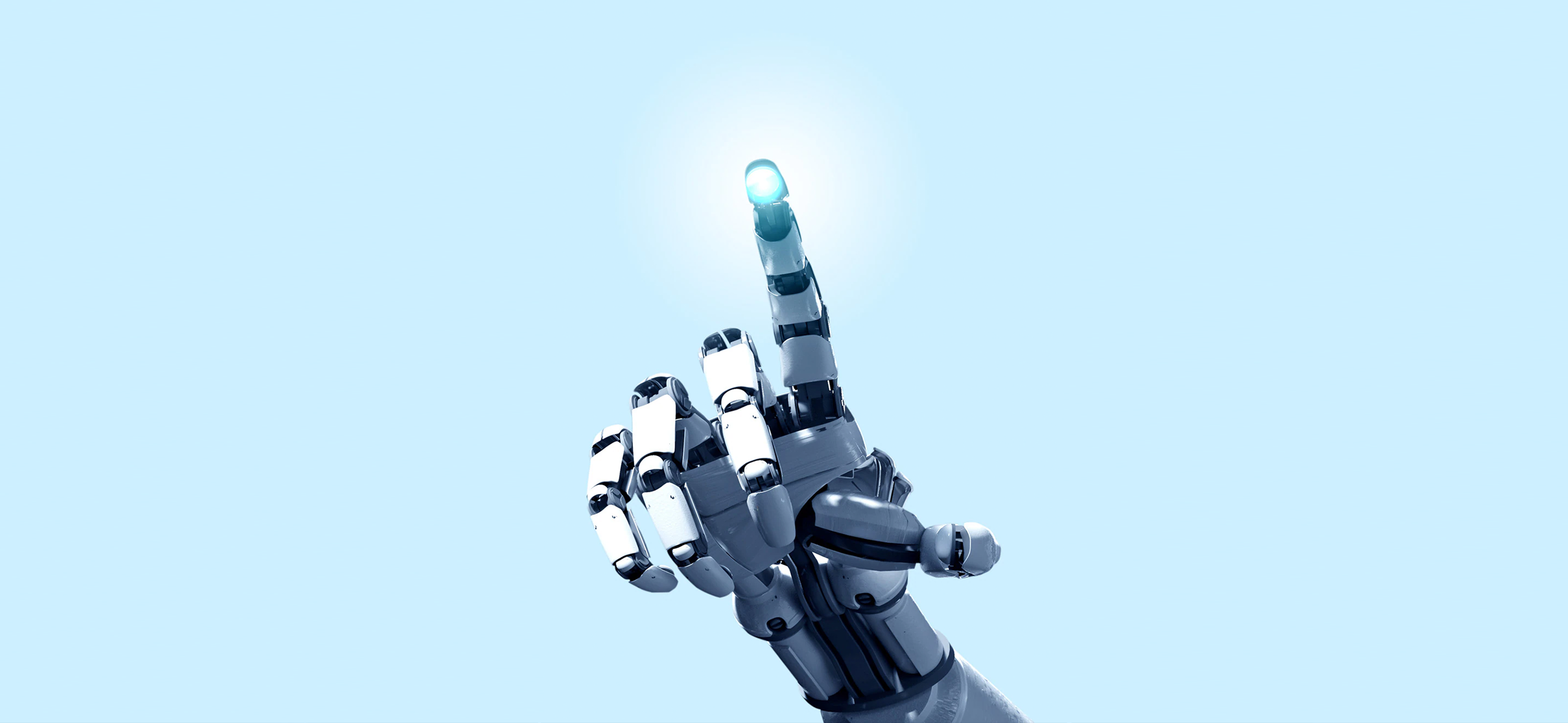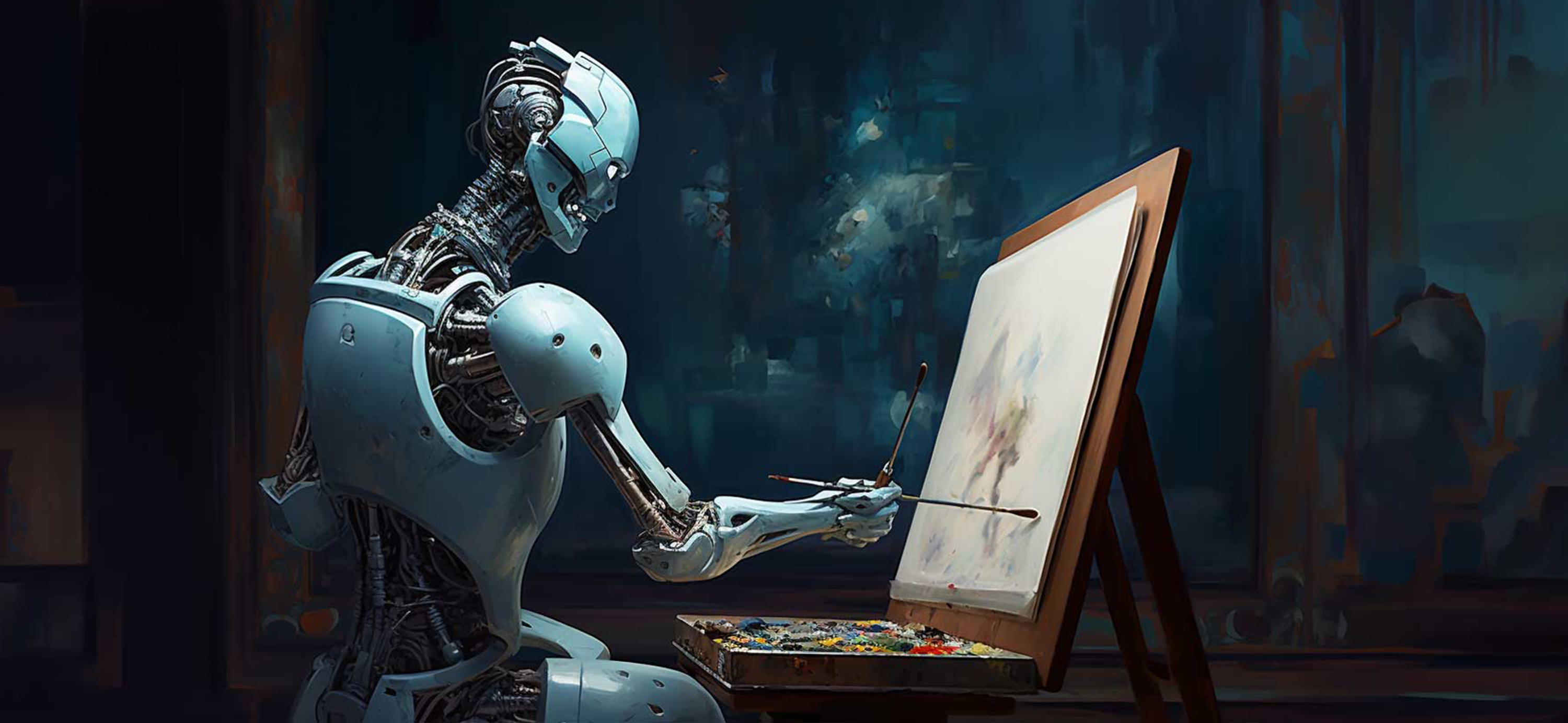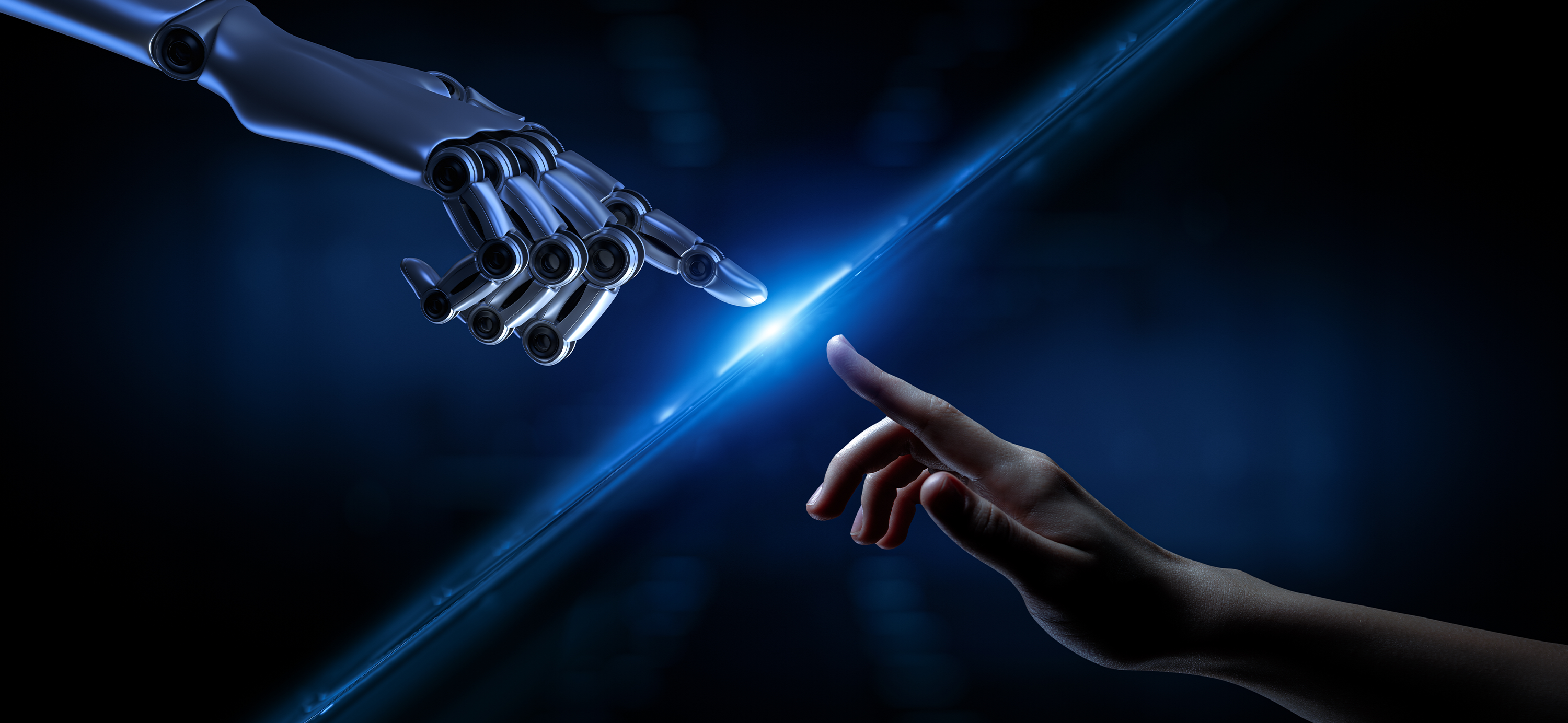
29 September 2023
_creative insights
How To Navigate AI as a Designer
They say that change is as good as a holiday. I’m not sure I agree, not all change works for me. The big change this year is the escalation of AI. AI has emerged in complex and profound ways that we haven’t seen previously, and it’s brought about incredible change. With change comes fear, excitement, and much debate. We’ve all seen online debates about Bitcoin, NFTs, vaccinations, you name it… But this year it’s all about AI– in particular Chat GPT.
By Storm Wiggett
As a designer, there’s a lot to unpack. How will AI shape the future of design and the designer’s role? Will the AI steam engine make us designers relics and vestiges of the past?
What is AI?
Artificial intelligence (AI) is a machine’s ability to perform the cognitive functions we usually associate with human minds. And, AI isn’t new, the term was coined in the 1950s.
However, this year AI has become ubiquitous as more languages develop, and not a day goes by where we don’t see some article or social media post about it. AI is being used across disciplines and there’s an increase in tools that have AI at their core.
AI is controversial and we still don’t know exactly what the impact will be. From a design perspective, AI can drive design in two key ways. Firstly, by using algorithm-driven design to automatically create a design, and secondly, by using data-driven design to input into the manual design process. AI design software such as DALL-E and CLIP use GTP-3 to automatically create designs based on human concepts.

Problems and Fears Around AI
AI is changing and influencing the design industry, and the fear is that it’ll make designers redundant. Another fear is that the failure to engage or explore AI will mean being left behind. This sentiment is particularly true for the older generation who think they’ll be eclipsed by designers who embrace the change. There’s also the fear that with AI, anyone can become a designer.
Technophiles claim that AI is a tool that is only as good and capable as the person using it. On the other side of the fence, Luddites and sceptics argue that AI is steeped in plagiarism and seeing it as simply a tool is reductive and problematic.
The problem is that designers who are starting out might be overlooked for opportunities because AI does entry-level work very well. AI allows people to create what’s in their minds by inputting the information into an AI platform. For example, AI can design pretty passable logos in a few easy steps– certainly better than what I’ve seen being created by the boss’ daughter who has an “eye for design” and a penchant for Microsoft Paint. I anticipate that low to middle-tier designers will suffer and this is a problem in the long term. Another problem is the devaluing of art. Digital art is being produced at a rapid rate by AI, and much of this has developed by plagiarising original artists. Furthermore, once art becomes ubiquitous it is cheapened.
However, we can learn a lot from the emergence of stock photography. Photographers initially took a knock with the rise of stock photography because clients viewed it as a cheap and quick solution. However, when executing packaging items it’s difficult to find photographs at the right angle, in the same light, and with the correct proportions for your packaged item. Higher-end packaging that uses photography specifically shot and styled is leagues ahead of competitors who use generic stock imagery.

Putting AI to the Test
I was recently told that AI would put me out of business and that it could do my job in seconds. I love nothing more than proving people wrong, especially when they try to tell me that design is “easy”. I set a challenge where AI and I would both replace a picture of me on a green background with an orange background.
AI’s first attempt was a collage of actual oranges. The second attempt was very amateurish and not something I’d send to a client. It took me just under an hour and a half to achieve a professional result that I’d be happy to submit to any client. The verdict is that AI is great for entry to mid-level design executions, but not the high-end quality a premium brand/ client expects.
In its current iteration, AI allows for a mediocre rendition of design functionality. I equate it to Pinterest in that it creates a homogenised aesthetic. If everyone uses the same tools and inspiration it looks generic.
And what about copyright? Legally, if a reasonable person sees the piece of art as similar to another, and points out which is the copy, then an infringement has occurred. AI draws on a catalogue of existing imagery/artworks and amalgamates them to create something “new”. The result is that a lot of AI-generated imagery looks familiar. In design, having your logo or brand reminiscent or like another brand is a massive faux pas that can also potentially land you in legal hot water.
Predictions for the Future
AI will impact the design industry but will unlikely replace human designers. However, any repetitive tasks are likely to be automated.
Design work is complex and relies on context, brand story, an understanding of the target audience, and a level of artistry, imagination and creativity that machines simply don’t possess. However, AI is a great tool because it can augment and enhance our work and provide us with real-time data and feedback.
So how can we use AI?
- AI can iterate on ideas faster, generating multiple variations of an image/design, reducing time and improving efficiency.
- AI is a fantastic source of inspiration and is excellent for finding reference pictures and ideas.
- AI saves time by giving us access to a huge catalogue of reference images that are specific to our needs.
- AI allows designers to build an image quickly without having to draw it from scratch.
- Working collaboratively with AI allows new outputs for designers.
- AI can be used as a creative assistant whereby you prompt the system in the direction you wish to pursue. After each output, you can evaluate the response and further guide it to get you the best result.
- AI cuts down legwork by helping with cropping, resizing, and colour correction.
- AI can generate photorealistic images that can have a multitude of uses.

What I’ve Learned
AI is an incredible tool, but it is not without ethical problems, and I think that it needs more careful and considered regulation.
At this stage, AI can’t replace human ingenuity or potential, rather, it can be instructed. Because AI tools don’t give you much freedom to impact design direction, the final results miss the human touch. Furthermore, because it pulls from many sources and creates based on an amalgamation of sources, it creates something based on copying. People who use it need to be aware of issues such as plagiarism and intellectual copyright.
AI is still very trendy, and a lot of companies have used it to represent their forward-thinkingness and situate themselves as early adopters. In 2016 Nutella sold 7 million jars of their famous spread, in just one month, by creating 7 million different labels created by an AI algorithm. The jars are purported to be “artworks” but I’m not convinced because although each one is unique, the sheer volume produced means that they lack the potential to be collectable. In contrast, Taylors of Harrogate unveiled a craftsmanship-inspired rebrand where they used artwork created by artists across the globe. This “real” element adds to the story and creates brand loyalty because it is ethical.
Used as a tool, AI is like Photoshop or the Internet, and will help us perform tasks faster and more efficiently. AI is ground-breaking in that it makes design accessible to everyone. That said, it can’t replace the need for high-end execution, imagination, creativity, and uniqueness.
I believe that there will always be a market for big brands and niche designers to earn money to create unique and creative bespoke content. We need to trust that people will continue to support exceptional art and design, because computers don’t buy products, people do.